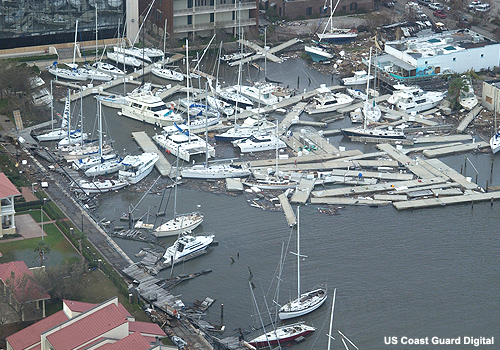Product/Process Incidents
One of the three major categories of incident types. The other two being Natural/Human-made and Fictitious.
This also aligns with a conversation about the definition of a threat versus a hazard. We view threats as the “thing” causing the potential adverse impact (the “hazard”). So a series of days of heavy rainfall generates flash flooding, which makes your street flooded where you can’t get in or out of your home. Hurricanes can generate flash flooding and so can dam breeches. The incident occurs when people are adversely impacted by the hazard (or hazards), generated from the threat (or threats).
Product/Process Incidents – which by the way, we are using the term ‘incidents’, when others may say disasters, catastrophies, crises, emergencies, etc.
Someday we hope there will be clearer definitions for the severity of the incident to delineate between an emergency and a catastrophe – and also elimination of the phrase “natural disaster“.
UNDRR
These are those incidents which are generally self-contained within your organization or maybe involves your supply chain with third-party vendors. Bottom line, is that the rest of the public is not (yet!) impacted in the same way as you are – but these incidents can also be the start of something worse – they can cascade into other types of incidents or magnify/amplify other incidents out there.
Examples of Product/Process Incidents
A recall of a product is certainly a Product/Process incident for the company. In many cases, it may be manageable and not have a significant impact on revenue, goodwill, staffing, etc. of that company. Recalls and other Product/Process incident can have life safety impacts, such as food recalls, which require crisis communications and other emergency management actions by the firm, partners, governments, etc.
Product Tampering may be a Product/Process incident: if it occurs within the production or processing of the product. On the other hand, post-production (i.e. retail sales points and other sites) product tampering is a human-made incident (and a criminal one, too). The 1982 Tylenol murders were initially thought to be a Product/Process incident, then turned out to be external product tampering, and eventually led to massive Product/Process changes for the pharmaceutical industry.
Even governments themselves have processes which can be suspect, thwarted, error-prone, delayed, manipulated, etc. and become Product/Process incidents. The U.S. Election process comes to mind, especially presidential elections. Emergency Management principles (such as life safety concerns being paramount, incident stabilization, and property/asset protection) should be utilized by governments to preserve their election integrity.
A Product/Process Incident can originate from and generate other incidents
Everything is connected somewhere and some how. We mentioned supply chain issues as being a possible catalyst for your organization’s Product/Process incident. This can be everything from a traffic jam to a potential work stoppage at a major carrier to a worldwide pandemic. Your Product/Process incident can be one of the dominoes tipped over by someone else’s incident of any kind (think cyber-attack at a major U.S. pipeline) or even worse, a Natural Threat causes a Product/Process incident at your organization, which causes a Human-Made incident in the rest of the nation.
What to do about Product/Process Incidents
The key to Product/Process Incidents is to defend against them the same way you would any other threat or hazard. By taking an All-Hazards, All-Threats approach to Product/Process incidents the same way as you would for Natural/Human-Made and Fictitious Incidents, your emergency management team (i.e. crisis team, risk management team, etc.) will have the ‘muscle memory’ of following the same pathways and checklists for all threats and hazard types. Yes, the “response” is very different for a recall than it is for a tornado, but reframing management’s priorities, along with their crisis communications to the public and their own workforce is what Emergency Management is all about. Shifting from revenue generation or other mandates, to ones where life safety is now the guiding priority (sometimes at the cost of lost revenue, lost prestige, etc.) is also what Emergency Management is all about.
[Ad] Barton Dunant can help any organization view Product-Process Incidents in a holistic way, along with the other incdent, threat, and hazard types. We help organizations build crisis action plans, which cover all of the workforce actions needed on an all-hazards, all-threats basis.
References:
Kalaitzandonakes, M., Ellison, B., & Coppess, J. (2023). Coping with the 2022 infant formula shortage. Preventive medicine reports, 32, 102123. https://doi.org/10.1016/j.pmedr.2023.102123
Severin, P. N., & Jacobson, P. A. (2020). Types of Disasters. Nursing Management of Pediatric Disaster, 85–197. https://doi.org/10.1007/978-3-030-43428-1_5
Product/Process Incidents Read More »






